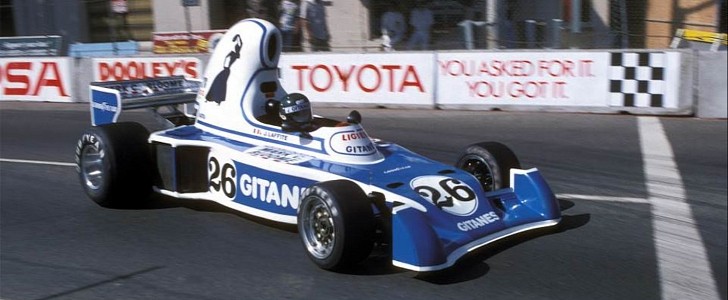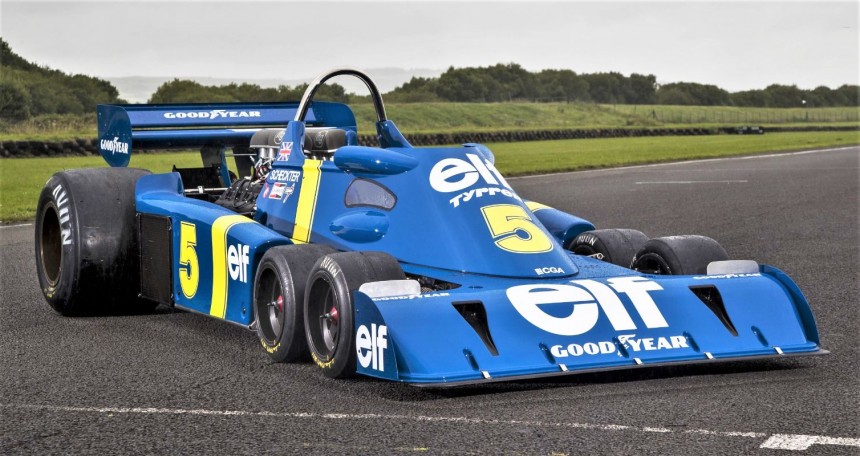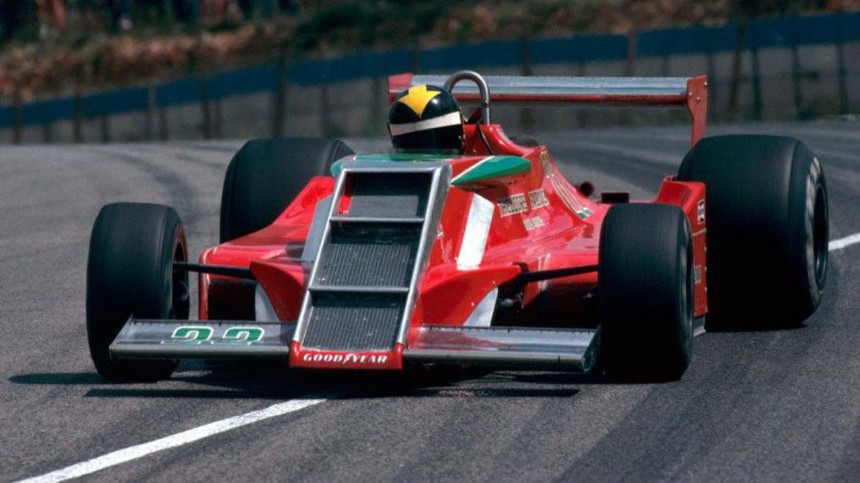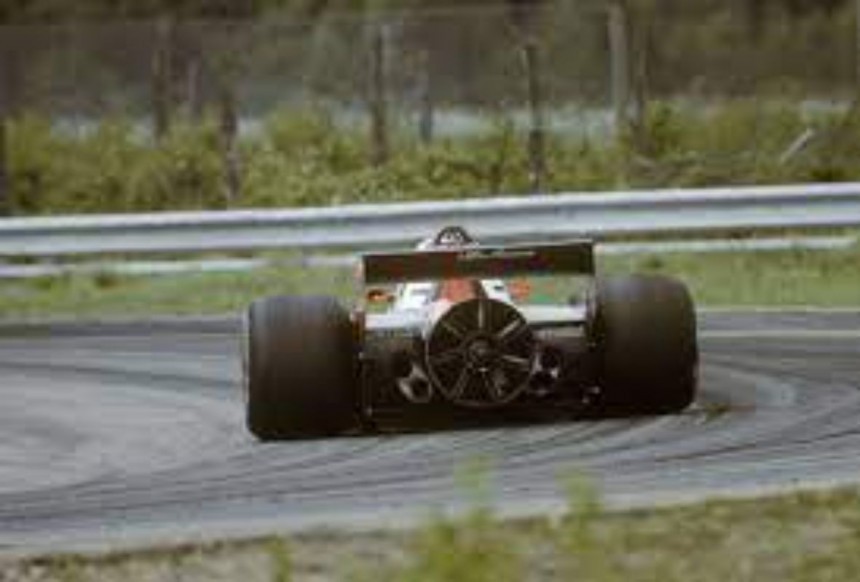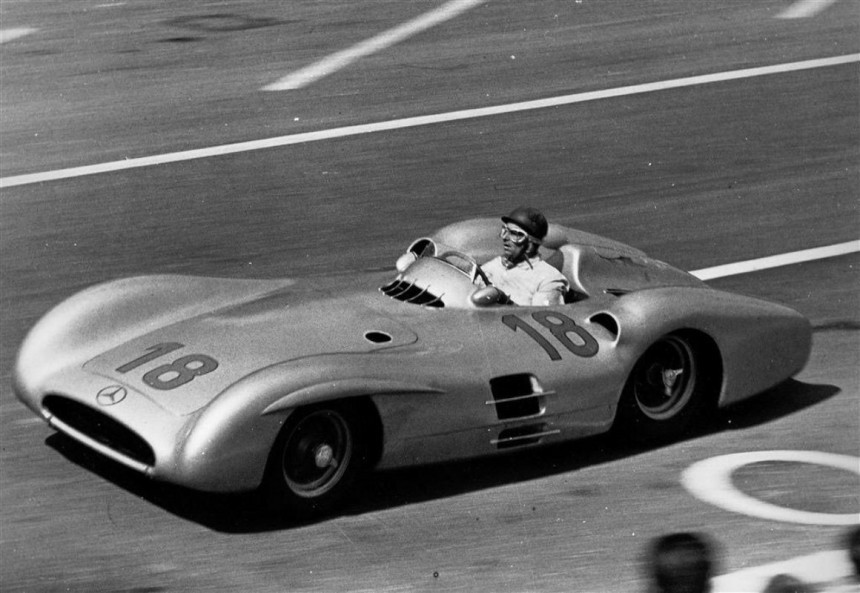The world of Formula 1 is constantly changing when it comes to innovation and technology. That's because it is one of the most competitive sports in the world, so every team wants to have that slight advantage in order to win the championship.
Keep in mind that we will talk here only about F1 cars which took part in actual races, not in pre-testing or free practices. So, if anything is clear, let's start with the first one.
Tyrrell 025- Used in the 1997 Formula 1 season, the Tyrrell 025 was one of the most interesting angular cars of the 1990s with its single pillar front wing and skinny, pointy nose. However, those were not the craziest elements about the Tyrrell 025. The appearance of the x-wings early in the season definitely didn't make the car any prettier, but it helped a lot in the performance category.
The 025 was underpowered due to the Ford engine, and the Goodyear tires didn't help with traction too much. Fundamentally, it was a good car, and in the hands of Mika Salo, it had its best day at the 1997 Monaco Grand Prix, running without a pit stop and finishing fifth in a wet race. The x-wings disappeared as fast as they came, and the underfunded 025 made a more significant impact with its visuals than its result.
Tyrrell P34- So we find ourselves in the 1975 Formula 1 season, a year dominated by Ferrari and a guy called Niki Lauda. Tyrrell (the team that helped Sir Jackie Stewart win two World Championships in 1971 and 1973) had a brilliant designer in Derek Gardner, and he saw the opportunity that a six-wheeled car could bring. He had long been searching for a solution to reduce the aerodynamic drag produced by the tires on F1 cars.
So after many designs and projects (including an IndyCar with six wheels in 1968), he showed to Ken Tyrrell, the team owner, his 34th project. In the beginning, Ken thought it was all a prank, but Gardner's knowledge convinced him, and the "six-wheeled" Tyrrell P34 was well alive.
Before Project 34 was launched, everybody was kept away from the project. It was such a big secret that even the drivers didn't know how the car looked. When it was launched, people from Tyrell racing drivers to team bosses, journalists, and fans were shocked by this crazy car with four small wheels up front and two normal ones in the back. Goodyear agreed to create these unique 10-inch wheels only for Tyrrell.
From the beginning, the British racing six-wheeler showed enormous potential having an excellent pace. Patrick Depailler qualified third in the first race weekend at the Spanish Grand Prix. Things got even better when at the Swedish Grand Prix, the fourth race for the P34, Jody Scheckter put the six-wheeler on the pole and led his teammate Depailler to a famous and incredible one-two.
But before the unusual car became famous, it went extinct. The P34 was heavy, slow on the straight line, and very understeery, especially on braking, all being a follow-up of the additional two wheels on the front. At the end of the 1976 season, the brain behind the unique car left Formula 1, and the project was replaced for the next season.
Ensign N179 - I won't blame you if you have never heard about this F1 car or the Ensign team. In the 1979 season, it qualified for only four races. From these four events, only once it reached the finish line, at the British Grand Prix, achieving P13.
When the 1978 F1 season ended, most of the teams were developing innovative racing cars with ground effect. Basically, everyone was copying Lotus because they won the championship (together with Mario Andretti) with a ground-effect vehicle. The N179 was equipped with a new, unique and weird system of front radiators. They were mounted right in front of the car, from where the cockpit ended to the end of the front wing.
Theoretically, it should have cooled the engine and allowed underside downforce. However, it did not make the engine cool enough, and besides, the drivers were suffering from intense heat in the cockpit. As a result, the design didn't last long and was ditched by the end of the season.
Brabham BT46B- Ah yes, the famous fan car created by the engineering legend Gordon Murray. The base BT46, if we can call it like that, made its racing debut at the 1978 South African Grand Prix. The Brabham was powered by a flat-12-cylinder engine developed by Alfa Romeo with a power output of 520 hp (527 ps). The BT46 was quick, even in its base form. However, reliability was a significant problem with this car.
By the early part of the year, Murray understood how Colin Chapman and his team were getting the downforce and grip from the Lotus 79. Gordon had designed the BT46B with a complex series of clutches running from the engine to a single large fan at the back of the car. Basically, the faster the flat-twelve ran, the stronger the suction effect. The whole vehicle was basically sucked to the ground and produced staggering downforce numbers.
The car was tested in secret conditions before the Swedish Grand Prix and certainly had the wanted effect. Two-time world champion at that time, Niki Lauda, described the Brabham as extremely bad to drive. The ground effect developed at this rate was exhausting the drivers way before the end of the Grand Prix. Still, the cars were not upgraded for the Swedish Grand Prix, where Lauda and his teammate, John Watson, deliberately put the cars second and third in order to hide the Brabham's huge advantages. The two drivers had qualified the car with full tanks to avoid taking pole position under orders from team boss Bernie Ecclestone.
Lauda won in Sweden by a significant margin with the help of the fan. Unfortunately, Brabham's competitors pressured Bernie Ecclestone to withdraw the car from F1. At the same time, Bernie and Murray both knew they would easily win the championship with such a car. In the end, they voluntarily withdrew the BT46B fan car after the Swedish race, going back to the base BT46.
March 711 - Well, most of the cars on this list are from the 1970s because, at that time, the F1 rules were not as strict as today, especially in the aerodynamic department. As a result, March created the 711 model, which is undoubtedly one of the oddest-looking cars in F1's history. Primarily because of its high front wing that looked like a tray carried by a waiter at a restaurant. Still, the March was pretty fast, with Swedish driver Ronnie Peterson achieving five podiums and finishing second in the drivers' championship behind Jackie Stewart.
Mercedes-Benz W196 Type Monza - The W196 Type Monza is unique in Formula 1 history because it was a closed-well racing car that took part in the 1954 and 1955 seasons. The W196 came victorious in nine out of the 12 races, with three being won by the Type Monza aluminum bodywork known as the streamliner. One of the main problems, especially pointed out by the late great Juan Manuel Fangio, was the impossibility of seeing the front wheels. While it's not the only streamliner to have raced in F1, it is the most successful one there has ever been and likely ever will be.
These are some of the most unusual cars that have ever raced in Formula 1. Let us know which one you think is the weirdest in the comments section below.
Tyrrell 025- Used in the 1997 Formula 1 season, the Tyrrell 025 was one of the most interesting angular cars of the 1990s with its single pillar front wing and skinny, pointy nose. However, those were not the craziest elements about the Tyrrell 025. The appearance of the x-wings early in the season definitely didn't make the car any prettier, but it helped a lot in the performance category.
The 025 was underpowered due to the Ford engine, and the Goodyear tires didn't help with traction too much. Fundamentally, it was a good car, and in the hands of Mika Salo, it had its best day at the 1997 Monaco Grand Prix, running without a pit stop and finishing fifth in a wet race. The x-wings disappeared as fast as they came, and the underfunded 025 made a more significant impact with its visuals than its result.
Tyrrell P34- So we find ourselves in the 1975 Formula 1 season, a year dominated by Ferrari and a guy called Niki Lauda. Tyrrell (the team that helped Sir Jackie Stewart win two World Championships in 1971 and 1973) had a brilliant designer in Derek Gardner, and he saw the opportunity that a six-wheeled car could bring. He had long been searching for a solution to reduce the aerodynamic drag produced by the tires on F1 cars.
Before Project 34 was launched, everybody was kept away from the project. It was such a big secret that even the drivers didn't know how the car looked. When it was launched, people from Tyrell racing drivers to team bosses, journalists, and fans were shocked by this crazy car with four small wheels up front and two normal ones in the back. Goodyear agreed to create these unique 10-inch wheels only for Tyrrell.
From the beginning, the British racing six-wheeler showed enormous potential having an excellent pace. Patrick Depailler qualified third in the first race weekend at the Spanish Grand Prix. Things got even better when at the Swedish Grand Prix, the fourth race for the P34, Jody Scheckter put the six-wheeler on the pole and led his teammate Depailler to a famous and incredible one-two.
But before the unusual car became famous, it went extinct. The P34 was heavy, slow on the straight line, and very understeery, especially on braking, all being a follow-up of the additional two wheels on the front. At the end of the 1976 season, the brain behind the unique car left Formula 1, and the project was replaced for the next season.
When the 1978 F1 season ended, most of the teams were developing innovative racing cars with ground effect. Basically, everyone was copying Lotus because they won the championship (together with Mario Andretti) with a ground-effect vehicle. The N179 was equipped with a new, unique and weird system of front radiators. They were mounted right in front of the car, from where the cockpit ended to the end of the front wing.
Theoretically, it should have cooled the engine and allowed underside downforce. However, it did not make the engine cool enough, and besides, the drivers were suffering from intense heat in the cockpit. As a result, the design didn't last long and was ditched by the end of the season.
Brabham BT46B- Ah yes, the famous fan car created by the engineering legend Gordon Murray. The base BT46, if we can call it like that, made its racing debut at the 1978 South African Grand Prix. The Brabham was powered by a flat-12-cylinder engine developed by Alfa Romeo with a power output of 520 hp (527 ps). The BT46 was quick, even in its base form. However, reliability was a significant problem with this car.
The car was tested in secret conditions before the Swedish Grand Prix and certainly had the wanted effect. Two-time world champion at that time, Niki Lauda, described the Brabham as extremely bad to drive. The ground effect developed at this rate was exhausting the drivers way before the end of the Grand Prix. Still, the cars were not upgraded for the Swedish Grand Prix, where Lauda and his teammate, John Watson, deliberately put the cars second and third in order to hide the Brabham's huge advantages. The two drivers had qualified the car with full tanks to avoid taking pole position under orders from team boss Bernie Ecclestone.
Lauda won in Sweden by a significant margin with the help of the fan. Unfortunately, Brabham's competitors pressured Bernie Ecclestone to withdraw the car from F1. At the same time, Bernie and Murray both knew they would easily win the championship with such a car. In the end, they voluntarily withdrew the BT46B fan car after the Swedish race, going back to the base BT46.
March 711 - Well, most of the cars on this list are from the 1970s because, at that time, the F1 rules were not as strict as today, especially in the aerodynamic department. As a result, March created the 711 model, which is undoubtedly one of the oddest-looking cars in F1's history. Primarily because of its high front wing that looked like a tray carried by a waiter at a restaurant. Still, the March was pretty fast, with Swedish driver Ronnie Peterson achieving five podiums and finishing second in the drivers' championship behind Jackie Stewart.
These are some of the most unusual cars that have ever raced in Formula 1. Let us know which one you think is the weirdest in the comments section below.
